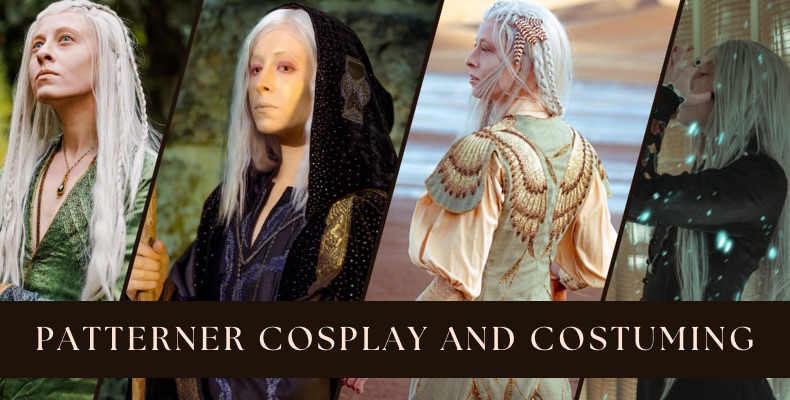The Bride Stories manga is set in the Turkic nineteenth century. I suspect that author and artist Kaoru Mori was intentionally vague because the story doesn't like to get hung up on sociopolitical details, and I can hardly fault her for that, but it has necessarily made my job a bit more difficult with regards to figuring out how to build the costume. The fact is that, even though I am a costume historian, I have no Turkish heritage and prior to beginning this costume had no particular knowledge about Turkic/Ottoman costume history. It is therefore extremely important to me to represent the region's rich history in a respectful manner with regards the current political and humanitarian issues that have sunk the region increasingly into wars and crimes against humanity.
The author of the manga appears to have avoided, as I said, specifying the specific geographic region in which the story takes place. It's hardly relevant to the story, but the reader should be aware that the "Turkic region" is in reality a collection of highly diverse cultures with their own histories and traditional costume styles. I drew heavily on traditional costume from Yemen as the closest match to the series artwork and used extant examples of garments from the Ottoman Empire to fill in the gaps. I made some design decisions that deviated from the series artwork because I am extremely wary of cultural appropriation and the necessity of respecting cultural heritage. Here is a discussion of what design decisions I made and why.
All artwork is attributed to Kaoru Mori.
Kaftan (outer coat): This is the closest term I could find for this garment. It is a semi-fitted coat that flares below the hips with the use of gores. I eliminated the slit in the back of Amira's because I couldn't find a single real-world example with such a slit. Honestly, in making the garment, not having it also significantly improved the drape. Also, the sleeves were traditionally rectangles, buttoned instead of seamed, that were simple stitched straight across the shoulders. Amira's appear to be more tailored, but after trying both styles in mock-up I once again decided to deviate from the series artwork and maintain the traditional garment construction.
Yelek (Vest/inner coat): Again, this is the most analogous real-world garment in existence. They were an inner garment generally worn under something like a
kaftan and may or may not have sleeves or a collar. Nothing I see in museum collections has a collar configuration quite like Amira's and most either lack a closure or have extremely showy button closures, but in this case I decided the look in the series artwork was essential to the costume. I kept it and the hidden center front closure. Honestly I have no idea what's going on with the sleeve embroideries. They're not traditional at all, so I'm not sure what they should actually look like, but I'll do my utmost to reproduce them in goldwork embroideries.
Shift/underdress: The skirt of Amira's shift appears to have an impossibly large circumference. I looked at several patterns for Ottoman garments in the nineteenth century and couldn't find anything quite like it. I stuck with the historical pattern and drafted the gores to flare as much as possible to achieve maximum circumference.
Hat: This is a fairly easily-understood piece. The embroideries on Amira's hat are not really traditional, but we must go with the artist's intent on this one.
Jewelry: These pieces are fairly well-documented in history. The long cylindrical bead initially confused me, but I found out that it is a prayer box and quite a standard piece of jewelry in the Turkic region. It was surprisingly easy to locate one that looked almost exactly like Amira's.
Shoes: *shrug* are we in Mongolia? Turned up toes aren't really a Turkic thing, but okay. What should these even be made out of? Leather or felt are options.
Trousers: Nothing complicated about these. The nineteenth-century Ottoman cutting patterns are perfect.
Head wrap: HAHAHAHA who knows. I can find head wraps that drape over the head. I can find ones that wrap around the head. Ones that tie on top of the head? Not so much.
That's it really! Writing this after finishing most of the costume, I can attest to just how difficult it was to draft the patterns for this costume. I've never seen photos of these exact types of garments being worn together, and perhaps for good reason, with how tricky it's been to get them to lie properly when worn together. That said, the research stage was certainly fascinating and I would definitely categorize this as a project that taught me a great deal about historic costume and the fact that, while it may look perfect in documentation, the reality of clothing is that it isn't always as easy to wear as it appears.


























